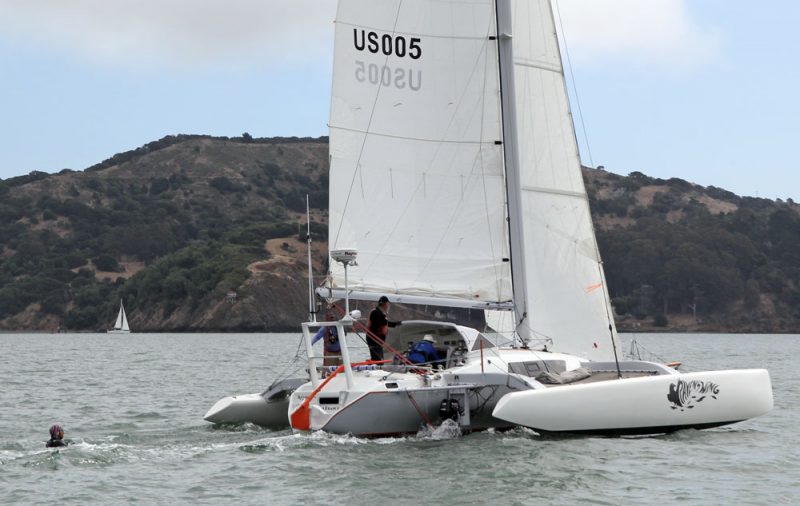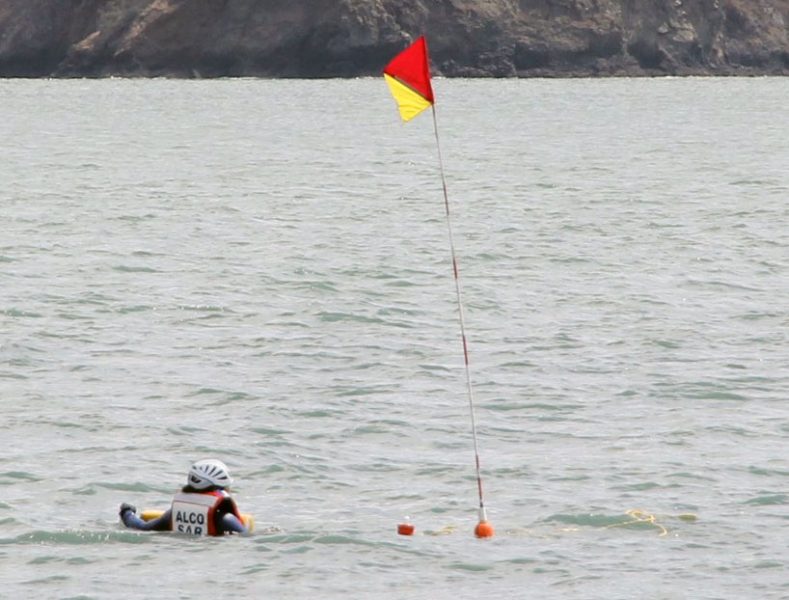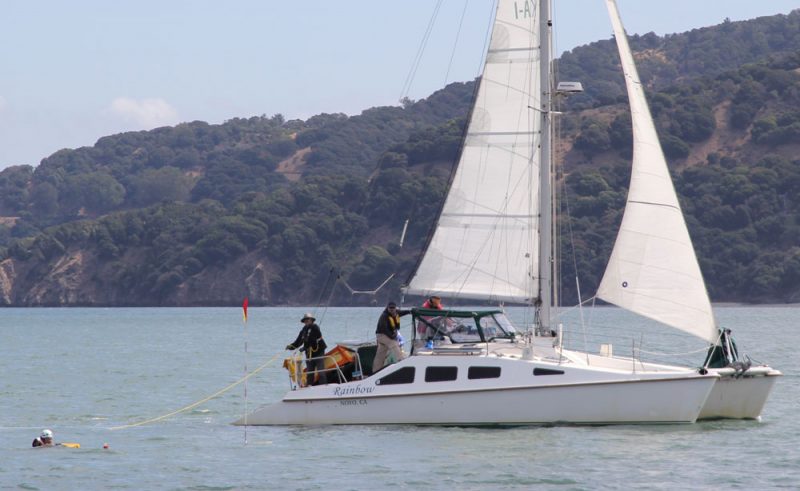
Crew Overboard! But not by Accident
Seventeen people came out for BAMA’s crew overboard training on Sunday, August 18, distributed across three boats, all of their names starting with “Ra.” Ravenswing (F-36 trimaran), Rainbow (Crowther 10M catamaran) and Raven (F-27 trimaran) took turns having a crewmember jump overboard and then turning around to retrieve them, in a freshening 12-14 knots of wind at the entrance to Richardson Bay, between Sausalito and Belvedere.
We tried several different methods of approaching the crewmember in the water, either by motor or with sails. All three methods were successful, recovering the overboard crew in anywhere from 3.5 to 11 minutes. All boats used a Lifesling to bring the crewmember to the side of the boat and bring them back on board.

The exercise was very useful, and several things were eye-openers. Here are a few observations:
- Radio communication with the overboard crewmember’s sopping-wet VHF radio was very difficult. All we could hear was muffled and unclear sound. It was very difficult to get a simple “I’m OK” confirmation.
- Colors help a great deal with visibility. One crew-overboard pole was missing a flag. Paired with an overboard crewmember wearing mostly black, that made it difficult to spot the person in the water. Colors and a nice flag (see picture) made it much easier to spot the person in the water.

- The low freeboard on trimarans like the F-27 made it easy to bring the overboard crewmember back on board, at least when they are able to participate and help themselves getting on board.
- Lifting an incapacitated overboard crewmember back on board using a halyard works, but even with the winch, that’s heavy!
- Things get very busy on board during a crew-overboard recovery. Between getting the crew-overboard module in the water, getting sails down, pointing at the crewmember in the water, getting the Lifesling ready, turning the boat around, and getting back to the crew in the water, there’s a lot going on. On Raven, we did our recovery with just three people on board, and we were busy! We completely missed all radio communication while we were turning around. It makes you think about what it would be like with a crew-overboard situation for a doublehanded crew (I usually race shorthanded), which would make for a singlehanded boat trying to return to the other crewmember for recovery.
- On the F-27, recovery by going into irons worked pretty well. We turned into the wind, furled the jib, sailed a figure-8 with two jibes with just the main to get back to our crewmember in the water, then went into irons after circling around the crew, and that made for a nice and stable platform for recovery.

After the event had concluded, we all tied up at Clipper Yacht Harbor in Sausalito for lunch, giving everybody a chance to chat about the event and socialize. I think everybody walked away from the event thinking that they learned something new, and that means crews will be better prepared when they encounter a crew-overboard situation for real.
The format of the event worked well, and now we have a sense of timing. We are looking to repeat this exercise next year and open it up for monohulls and the broader Bay Area sailing community. Special thanks to Anton Bertaux, Carliane Johnson and Jeremy Boyette for being our three volunteer jumpers!
